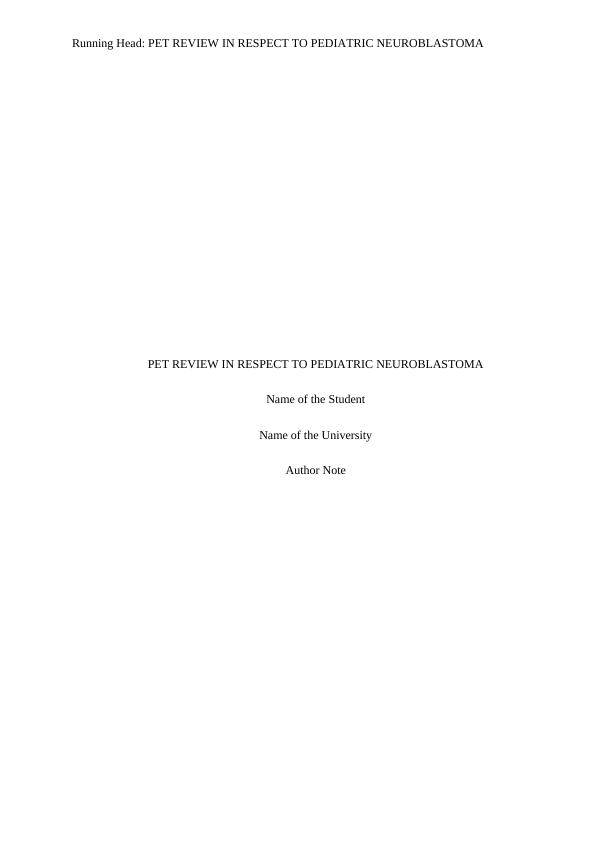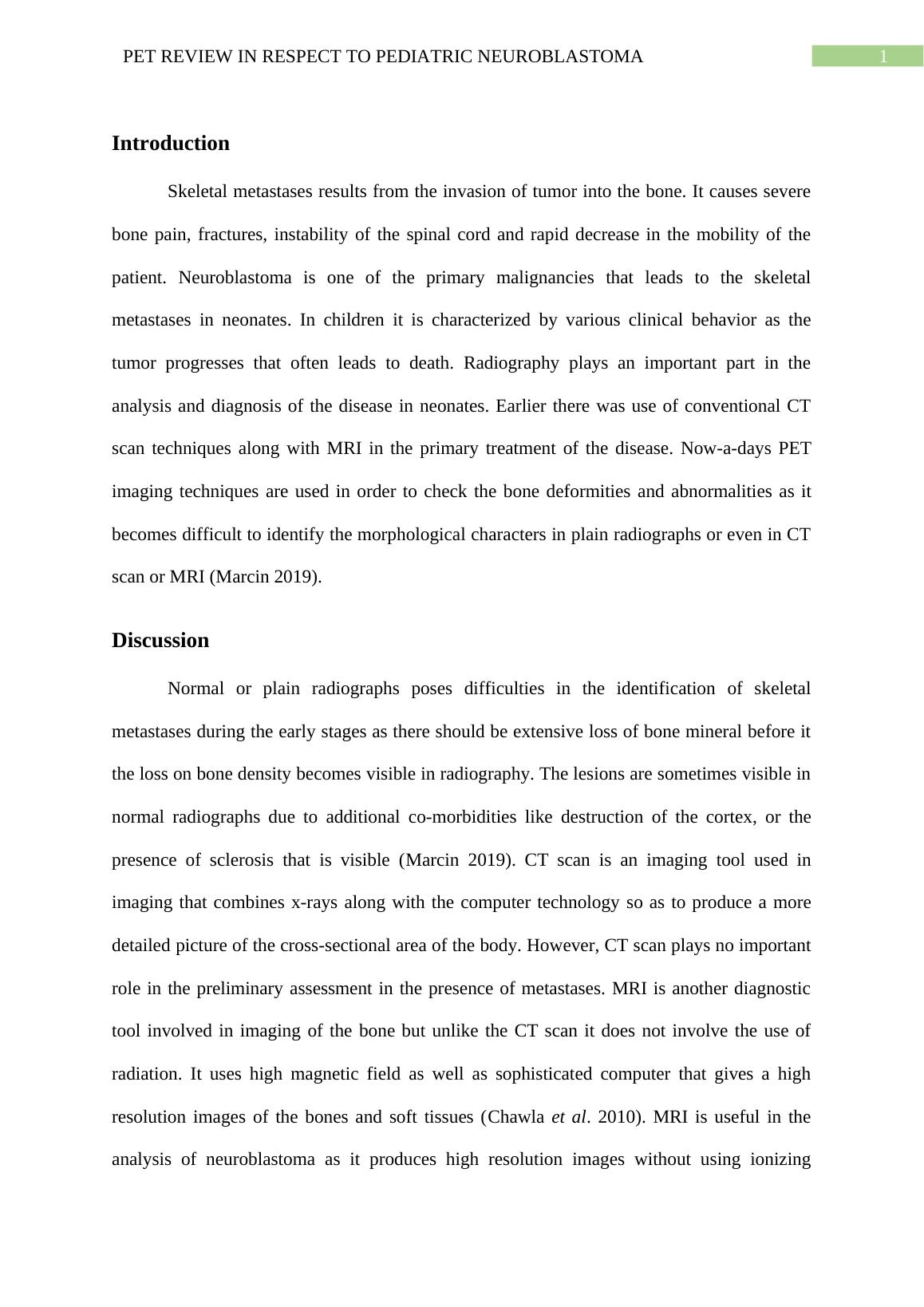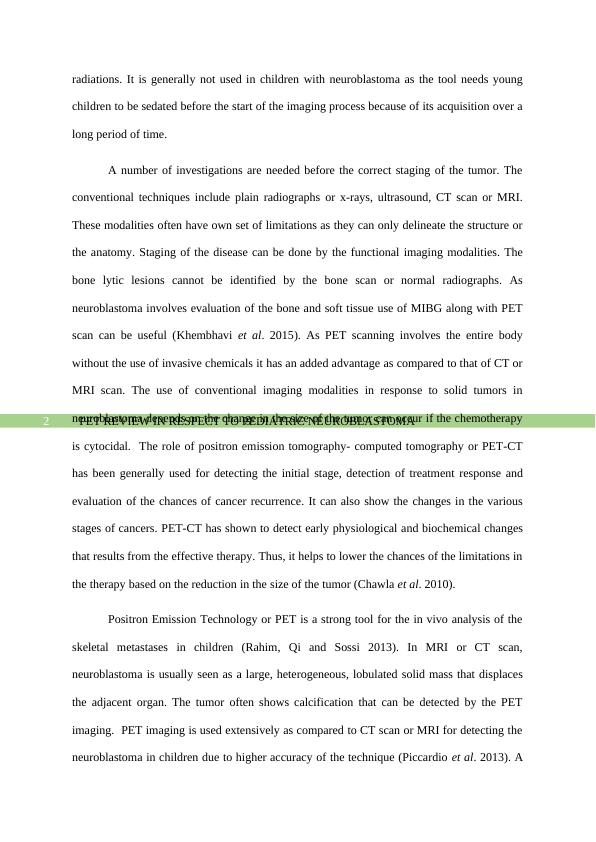PET Review in Respect to Pediatric Neuroblastoma
8 Pages1916 Words61 Views
Added on 2022-12-26
About This Document
This article discusses the use of PET scanning in the analysis and diagnosis of pediatric neuroblastoma, including its advantages over conventional CT scan and MRI. It also explores the role of PET in staging, detecting treatment response, and evaluating the chances of cancer recurrence. The article concludes that PET scanning has the potential to improve the initial staging of neuroblastoma in children.
PET Review in Respect to Pediatric Neuroblastoma
Added on 2022-12-26
ShareRelated Documents
End of preview
Want to access all the pages? Upload your documents or become a member.
SYSTEMATIC REVIEW AND META-ANALYSIS.
|12
|3686
|2
Skeletal Metastases of Neuroblastoma: A Systematic Review of Imaging Techniques
|23
|9507
|453
Medical Imaging
|6
|1310
|67
Review of Benefits of Radiotracer in Bone Metastases
|7
|1276
|18
Report on Imaging Modalities
|7
|1251
|286
CBCT Imaging in Dentistry: History, Techniques, and Radiation Protection
|25
|11050
|317



